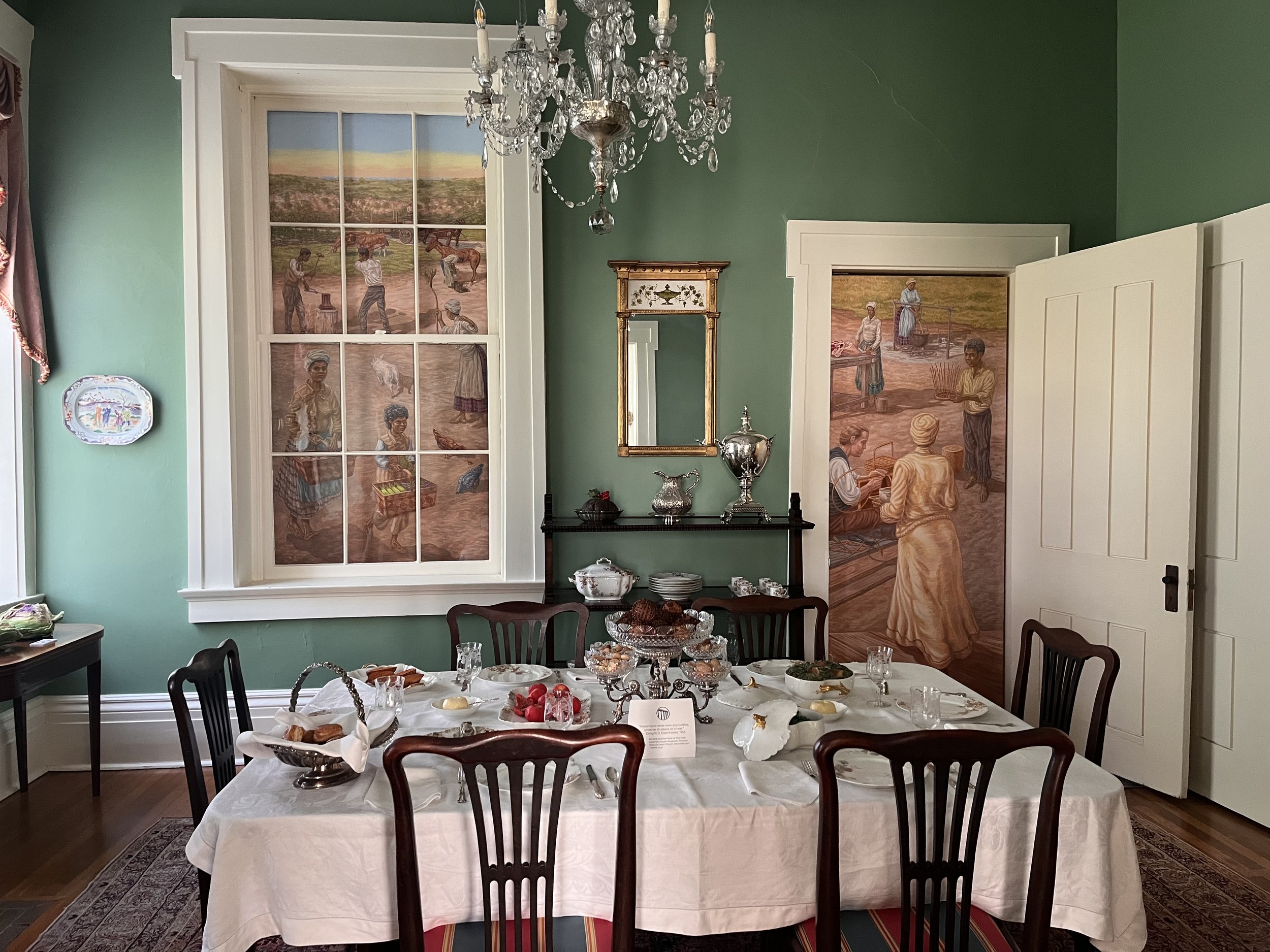
Fidencio Duran views the NCHM Dining Room window where one of the three panels will be installed. In the 19th century this window looked out into the back yard, but with the construction of the addition in the early 20th century this visual connection was lost.
Fidencio Duran at work in his home studio
The NCHM Dining Room window panel in progress.
Dwain Hebert (J. Pinnelli Co.) and NCHM Facilities Manager Gene Heard reinstall the Dining Room window over the mural panel.
NCHM Dining Room
NCHM Back Parlor window
Give Us This Day is an interior mural project by Fidencio Duran designed to reconnect the main house and the areas that surrounded it during the second half of the nineteenth century. Too often when one visits a site with ties to enslavement and to free labor visitors learn about the family who lived inside the house while touring that space and then about those who labored on the property while outside. It is our goal to show that the lives of all who occupied our site were intertwined.
A series of three murals present enslaved and free laborers’ daily tasks in gardening, construction, animal care, laundry, medical care, and craftsmanship. They have been placed in two windows - dining room and back parlor - as well as the original dining room exterior doorway, through which visitors will see a woman exiting the space from serving at the table.
When the site was first developed, the view from the west-side windows and doorways arced down toward the Shoal Creek watershed to the west, an area now known as Pease Park. Smoke curling towards the sky on the horizon line will evoke the importance of that watershed to indigenous people traveling through Central Texas over thousands of years, including during the early Austin period.
Give Us This Day was installed at the Neill-Cochran House Museum in March 2025. Join us for an Artist Talk with Fidencio Duran on Sunday, May 4. Click here to learn more and register for this free talk.
Artist Statement
It is my honor and privilege to present my artwork in this effort to recognize the contributions of enslaved workers at Neill-Cochran House from the days of the early Texas Republic to the end of the Civil War. Their labor as domestic servants and builders skilled in the arts of cooking, soapmaking, butchery, animal care, farming, carpentry, masonry, and blacksmithing was indispensable as one third of Austin’s population in the establishment of Austin as capital of Texas and the establishment of American culture in this region. Their awareness, caring, and service can inform our present and inspire us to value humanity well in the future.
Fidencio Duran
Give Us This Day by Fidencio Duran
Photography by Bardagjy Photography
Sponsors and contributors
The Give Us This Day mural project was sponsored by The Meadows Foundation and Preservation Austin.
Eastside Picture Framing, Parker Art Handling, and J. Pinnelli Company helped make this project a reality.














